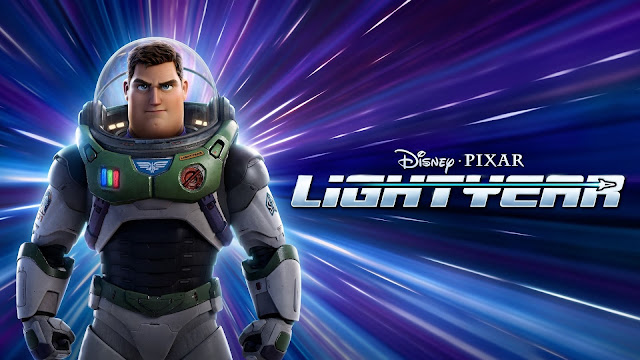In 1995 a boy named Andy got a Buzz Lightyear toy for his birthday.
It was from his favorite movie.
This is that movie.
Pixar's
Lightyear is based on the concept that the Buzz Lightyear toys from the
Toy Story movies must have been merchandising from some sort of intellectual property, in the same way that Sheriff Woody and his gang had their origins in the 1950s children's program
Woody's Roundup. Ultimately, that idea is irrelevant to the plot of
Lightyear, although it's an interesting meta decision to introduce a fictional franchise within a fictional franchise.
The film introduces Buzz Lightyear as the pilot of a Star Command exploratory spaceship that crashes on an alien planet after attempting to escape hostile life forms encountered on the planet's surface. Buzz, who is responsible for the crash due to egotistically ignoring offers of assistance and the advice of the autopilot, volunteers to pilot the ship being used to test an experimental replacement hyperdrive crystal.
However, he falls prey to the effects of time dilation and drifts increasingly out of sync with the rest of the crew, not to mention his best friend, who grows old and dies over the course of his repeated unsuccessful near-lightspeed test flights. Eventually his robotic cat companion solves the hyperdrive crystal problem, but on his return from a successful test, he discovers that robotic invaders have attacked the colony, and he must work with a misfit team to defeat the villainous Zurg and save the day.

Lightyear is a pretty good space opera. It's a solid little science fiction story with a couple of interesting twists, the
art direction is excellent, Chris Evans does a near-perfect imitation
of the original Buzz Lightyear voice (my apologies to Tim Allen, but
really, it's very good), and it makes surprisingly good use of relativistic physics and the effects of travelling at near light-speed (although I'll be honest and admit that I haven't actually checked the math for the time dilation ratio).
All that being said, I found that it somehow lacked the emotional impact that Pixar normally brings to the table. When I watch a Pixar production, I expect there to be at least one scene that brings a tear to my eye - for example, in The Incredibles, it's the moment where Mr. Incredible tells his wife that he's not strong enough to lose her again.
It's hard to say why Lightyear isn't more successful in that sense, you can certainly see them trying. There are some inspirational bits, a couple of tragic moments, a message from a dead friend, and a redemptive conclusion, you'd think at least one of those would have rung the bell to make me well up, but somehow Lightyear doesn't manage to pull it off, in spite of how good it is otherwise. It's possible that the script's just a bit too heavy handed: as I commented above, their attempts to create an emotional moment are quite obvious rather than being an organic part of the story.
It occurred to me while I was watching Lightyear that it could just as easily been done as a live action film, and I might well have found it more entertaining in that format. When you look at the cast of voice actors, it's completely feasible for them to replace their animated counterparts: Chris Evans, Keke Palmer, Taika Waititi, Isiah Whitlock Jr. - okay, at 44, Bill Hader admittedly feels a bit old to play Star Ranger recruit Featheringhamstan. That aside, it would be easy for Disney to add Lightyear to its list of animation-to-live-action projects, although they should probably bump it up the priority queue in case Chris Evans starts to lose his hair.
But that takes us to another question regarding the franchise within a franchise and the film within a film. Granted, Lightyear is Andy's favourite movie, but Andy is a character in an animated world. In that model, in Andy's reality, is Lightyear a live action production performed by actors, or is it an animated movie?
- Sid
















